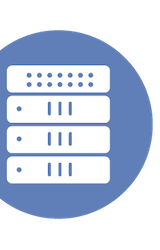Tech Field Day Coverage
Our delegate panel includes independent writers and thought leaders, and we collect their coverage of the event, Tech Field Day presentations, and sponsoring companies here.
Meet Field Day Delegate – Calvin Hendryx-Parker
Calvin Hendryx-Parker will be at Cloud Field Day. This is his very first event as a delegate! Calvin is the co-founder and CTO of Six Feet Up, an expert Python development and Cloud consulting company established in 1999. At Six Feet Up, he provides technical vision and leads all aspects of the company’s technology development. In his role, Calvin enjoys providing the strategic vision for enhancing the offerings of the company and infrastructure. A full interview is available with Calvin over at Gestalt IT, be sure to check it out.
Read More:
Meet Field Day Delegate - Calvin Hendryx-Parker
Meet Field Day Delegate – Kyle Jenner
Kyle Jenner will be participating in Cloud Field Day, his very first Field Day event as a delegate. We can’t wait! He will tune in from the UK and he is looking forward to connecting with the other delegates and hearing their points of view. Connect with Kyle at @KyleJennerUK on Twitter, and read the full interview on Gestalt IT. He talks about his biggest challenges in IT, what he’s been reading, and what he’d be doing if he wasn’t working in IT.
Read More:
Meet Field Day Delegate - Kyle Jenner
Meet Field Day Delegate – Andy Thurai
Andy Thurai is coming to Cloud Field Day as a first-time delegate! He is an independent consultant, analyst, and a thought leader in the emerging technology areas – AI, ML, Edge/IoT, and Cloud. Andy works with companies and advises on the GTM messaging and helps field teams sell to CxO technical executives by creating value-based messages and the problem it solves. Be sure to check out his full interview over at Gestalt IT.
Read More:
Meet Field Day Delegate - Andy Thurai
Cisco Intent-Based Networking Roundtable
Join the delegates from Gestalt IT’s Tech Field Day Virtual Cisco Live Experience as they dive into the latest intent-based networking announcements from Cisco. Listen in as they discuss the importance of network policy, user-defined networks, location tracking, and SD-WAN. Tom Hollingsworth leads the expert panel of Phil Gervasi, Shala Denise, Jonathan Davis, John Herbert, and Jody Lemoine.
Read More:
Cisco Intent-based Networking Roundtable
Microsegmentation With Meraki Adaptive Policies
When it comes to networking and user based security policies in a Cisco environment, a lot of people will immediately point to Cisco ISE and its process of creating policies based on a wide range of factors. Now when you think of Meraki, a lot of people still have the mindset that Meraki is built around simple network management and easy of deployment, which it is. They look to other Cisco products for the larger scale, more in depth, and customizable security features. That is a view that a lot of “old-school” engineers still keep. Meraki is now once again pushing boundaries and bridging the gap, bringing their product forward as a true enterprise option. This post by Kevin Blackburn breaks down the details of Meraki Adaptive Policies, which the company is using to make sure they are a viable enterprise option for the more security minded environments. Kevin recently heard from Meraki at the Tech Field Day Cisco Live Virtual Experience, so he has details on all their latest.
Read More:
Microsegmentation with Meraki Adaptive Policies
Meet Field Day Delegate – Lariana Luy
Lariana Luy will be attending Mobility Field Day at the end of July as a first-time delegate. She will be bringing her knowledge and expertise to the event all the way from Brazil! If you check out Lari’s delegate page on our site, you’ll learn she was voted as The Wi-Fi Awards Rookie of the Year 2020. It’s great to have new voices in our delegate family. Be sure to learn more about Lariana in her interview with Gestalt IT.
Read More:
Meet Field Day Delegate - Lariana Luy
Cloud Field Day 8: The Edge-To-Cloud Journey
Aruba shares their excitement for their Cloud Field Day presentation in this post. Be sure to catch it live or on-demand. They’ll be discussing HPE’s edge-to-cloud architecture, the benefits of cloud-enabled AIOps across networking, servers and storage, how enterprises can deliver a cloud experience to the Edge, and the importance of cloud technologies in supporting a safe return to the workplace.
Read More:
Cloud Field Day 8: The Edge-to-Cloud Journey
Google Cloud VMware Engine (GVE) Brings Native VMware to Google Cloud Platform
At Tech Field Day, Google Cloud highlighted Google VMware Engine (GVE), a subscription-based service offering that brings VMware to Google Cloud Platform (GCP). Google Cloud VMware Engine (GVE) comes to the market to help enterprises migrate, extend, and enhance their VMware workloads using Google Cloud. Dedicated, hyperconverged hardware comes with many benefits, including guaranteed performance, and simplified security and compliance. But, one of the key differentiators is that unlike many cloud offerings, GVE comes with the freedom to install and configure third-party software so that businesses can migrate their workloads without disrupting their existing tooling.
Read More:
Google Cloud VMware Engine (GVE) Brings Native VMware to Google Cloud Platform
Meet Field Day Delegate – Neil Anderson
Neil Anderson is coming to Cloud Field Day! This will be Neil’s first event as a delegate and we are looking forward to what he brings to the table. From high school dropout to successful IT professional, trainer, and consultant, Neil thrives on making technology easy to understand and seeing students have that ‘lightbulb moment’. Be sure to read his interview with Gestalt IT to get to know more of his background, then see him and the rest of the delegates during the event.
Read More:
Meet Field Day Delegate - Neil Anderson
Meet Field Day Delegate – Jim Jones
We always love to see new delegates join us for events, it helps bring fresh perspectives and energy for the presentations, and allows companies to hear from up and coming minds in IT. Jim Jones will join us for Cloud Field Day, and sat down for an interview with Gestalt IT to learn more about him. They dig into how he first got into technology, what new skills he’s developing, his career challenges, and what he’d do if he wasn’t working in IT. Check it out before you see Jim during the events to get a little background.
Read More:
Meet Field Day Delegate - Jim Jones
VMware to Acquire Datrium
For Chris Evans, VMware’s approach to disaster recovery had seemed to take a pretty old school approach of emulating array-based replication, based on what he saw at Cloud Field Day earlier this year. This left a potential gap in their approach, that seems to have been filled by their recently announced acquisition of Datrium. This now gives VMware a modern DR solution that stands up to competing offerings, and adds a data mobility solution that extends out of the private data center and allows data migrations between public clouds.
Read More:
Diamanti Spektra 3.0 Simplifies Hybrid Cloud for Kubernetes Applications
Diamanti will be joining us for Cloud Field Day, and in this post gives a detailed look at Spektra 3.0. This new release is their next evolution of their hyperconverged platform for Kubernetes and containers extending to multiple clusters across a hybrid cloud. There are a number of new features in the release that we can’t wait to get the details of at the event, including multi-cluster management across bare metal and public cloud, policy-based multi-tenancy for enterprises and MSPs, and integrated deployment for stateful applications. There are a lot of details about how all this will work, so be sure to check out their Cloud Field Day presentation.
Read More:
Diamanti Spektra 3.0 Simplifies Hybrid Cloud for Kubernetes Applications
HPE vs Dell Cloud Stories – Who’s Winning?
Keith Townsend knows everyone love a hot take. So in this video, looking at HPE vs Dell Cloud Stories. Keith got to hear from Dell recently at Tech Field Day Presents Dell Technologies: Power Up the Portfolio and found the breadth of the portfolio was definitely impressive. Keith sees them having a lot of interesting possibilities in the cloud as they continue to refine their messaging and roadmap.
Read More:
HPE vs Dell Cloud Stories - Who's Winning?
Dell Power and the Challenge of Modernisation
In this post, Chris Evans looks at Dell EMC’s new storage portfolio, something they detailed during their Tech Field Day Presents Dell Technologies: Power Up the Portfolio presentations. For Chris, it’s interesting to see the company moving on from it’s existing offerings, many of which have been around for decades, and come from the acquisition of EMC in 2016. The company has done a good job updating these solutions, but Chris sees consolidation and a clear roadmap as the key to their storage future. Both of these were on display at the event.
Read More:
Dell Power and the Challenge of Modernisation
Infrastructure Intelligence for SMEs
In this post, Security Field Day delegate Zoë Rose takes a look at a number of incidence response and security tools aimed at SMEs. These often have the same issues as larger organizations, but must face them with smaller staffs and budgets. Tools targeting these customers need to be particularly efficient to maximize both. Zoë takes a look at several solutions, TotalView by PathSolutions (who presented at Security Field Day, PRTG by Paessler (which has been featured at several Field Day events), and Solarwinds MSP RMM (no stranger to our events either). She lists the pros and cons of each solution, and its a great roundup to start your research.
Read More:
Infrastructure Intelligence for SMEs
Dell EMC PowerStore: TFDx Quick Take
Keith Townsend is reflecting back on what he saw at Tech Field Day Presents Dell Technologies: Power Up the Portfolio in this video. This quick take on the Dell EMC PowerStore considers the hybrid device that converges a Mid-range (SMB) storage array with a VMware Cluster. For Keith, this might be a new category for storage, and a really important move for Dell EMC. Be sure to check out the full videos from the event for all the details.
Read More:
Dell EMC PowerStore: TFDx Quick Take
Meraki Health – Your Wireless User Watchguard
Troubleshooting is an inevitable part of IT, especially when it comes to wireless networking. As Kevin Blackburn points out in this piece, unfortunately, many organizations lack the staff to have 24/7 help or even large daytime staffs. At Tech Field Day Virtual Cisco Live Experience, he saw Meraki Health as a potential solution for this problem. This provides a health snapshot of all connected devices and shows where users might be experiencing performance issues. This information is stored in the cloud for 30 days, giving an additional way to get historical context to these issues, and help track down root causes to larger issues. Kevin was impressed to see this monitoring didn’t just stop at the wireless component, showing the experience from APs to switches and to backing application servers.
Read More:
Meraki Health - Your Wireless User Watchguard
Cisco SecureX – A Single Security Pane of Glass
Cisco is not unfamiliar to the world of network security solutions, but Kevin Blackburn thinks SecureX is a recognition that the company could do more from the standpoint of a consolidated security interface. Rather than being a tool that only works within the Cisco ecosystem, SecureX allows admins to take advantage of data from devices across your infrastructure. Cisco has a number of direct integrations with other vendors, as well as a general API that you can plug into. This really helps SecureX standout, not just from Cisco’s other security minded solutions, but within the industry at large. For Kevin, this allows you breakdown silos and get more visibility into possible security issues.
Read More:
Cisco SecureX - A Single Security Pane of Glass
The New Branch With Riverbed SD-WAN
What does your branch office look like? I’m sure the answer to that question is different than it was just six months ago. Tom Hollingsworth takes a look back at Riverbed’s presentation from Networking Field Day and how they have the right tools to make your new branch work just like it should.
Read More:
The New Branch with Riverbed SD-WAN
Dell Technologies: Power Up the Portfolio – Day Two
Dealing with the ever increasing amounts of unstructured data is a challenge for every organization. That’s why Barry Coombs was excited to hear about Dell’s PowerScale solution at Tech Field Day Presents Dell Technologies: Power Up the Portfolio. He was a delegate at the event, and not only go to hear all the deep dives on PowerScale, but created his unique visualized notes to compliment the presentation. In the notes, he looks at how using Dell’s OneFS provides its solutions with the scale modern organizations need, while also allowing for easily moving workloads to the cloud.
Read More:







